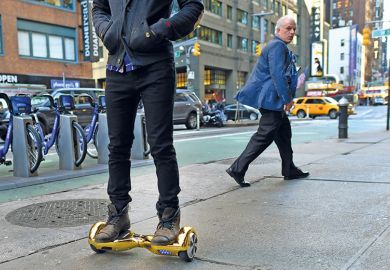"H2SO4 Professor, and the reciprocal of π to your good wife” was humorist Michael Flanders’ suggestion on how to start a conversation with a scientist. Roslynn Haynes’ conspectus of Western culture from the time of Chaucer will largely confirm Flanders’ implication that scientists are a different, forbidding breed. Her approach is to correlate developments in science and technology over the following seven centuries with descriptions of how scientists have been portrayed in contemporaneous literature, and more recently in film and television. The result is a fascinating read.
Haynes suggests that scientists in fiction fit one of seven stereotypes: the morally suspect alchemist; the idealist; the stupid virtuoso; the unemotional type who doesn’t do human relationships; the hero; the “mad, bad and dangerous”; and the helpless. Chemists will note that Haynes sees the most important of these to be our illegitimate cousin, the alchemist. Alchemists were suspect because many were charlatans, but also because of the secret nature of their craft. But people still sought their favour, hoping to receive the elixir of life or the formula to transform base metal into gold. Fiction’s first alchemist appears in Chaucer’s Canon’s Yeoman’s Tale, from 1387. Ever since then we have wanted the benefits of science, while being suspicious of both science and scientists.
The only unambiguously acceptable of Haynes’ scientist types is the idealist, portrayed first by Francis Bacon – in New Atlantis (1626), scientists fulfil the needs of the community and in turn are respected and revered! The stupid dilettantes, personified in Thomas Shadwell’s 1676 play The Virtuoso, seem pretty dull, while the unemotional and the heroic types offer the greatest entertainment value – think Sherlock Holmes and Jules Verne’s Captain Nemo. To me, the dangerous characters such as Frankenstein and Dr Strangelove are pretty one-dimensional. More interesting is that Frankenstein owes his creation to an 1816 short story challenge between the Shelleys and the Byrons. And the real-life Edward Teller, father of the hydrogen bomb, was much more terrifying than Stanley Kubrick’s film hero.
Perhaps the best fiction about scientists who feel powerless after opening Pandora’s box was inspired by the real history of the development of the first nuclear bombs. C. P. Snow’s The New Men (1954) and Friedrich Dürrenmatt’s play Die Physiker (The Physicists, 1961) are good examples. Recent scientific developments in fields such as climatology, applied genetics and robotics leave no doubt that this genre will run and run.
There is a short chapter on “The scientist as woman”. Allegra Goodman’s novel Intuition offers a rare and convincing account of today’s “publish or perish” world. There are significant differences between female scientists in film and TV as compared with fiction. Screen women are younger, more professional and more attractive.
Haynes’ coverage of literature and film is throughout compendious and mostly gripping. Her account of TV is not – where are Quatermass and Silent Witness? And there is no excuse for omitting the Doctor, Who may well seek her revenge.
Haynes believes in recycling. This volume is an extended edition of her 1994 book, From Faust to Strangelove. Her next will explore how the mad scientist stereotype is slowly being displaced, for example by the terrorist. More fun to come!
Richard Joyner is emeritus professor of chemistry at Nottingham Trent University.
From Madman to Crime Fighter: The Scientist in Western Culture
By Roslynn D. Haynes
Johns Hopkins University Press, 424pp, £26.00
ISBN 9781421423043
Published 5 September 2017
Register to continue
Why register?
- Registration is free and only takes a moment
- Once registered, you can read 3 articles a month
- Sign up for our newsletter
Subscribe
Or subscribe for unlimited access to:
- Unlimited access to news, views, insights & reviews
- Digital editions
- Digital access to THE’s university and college rankings analysis
Already registered or a current subscriber?





